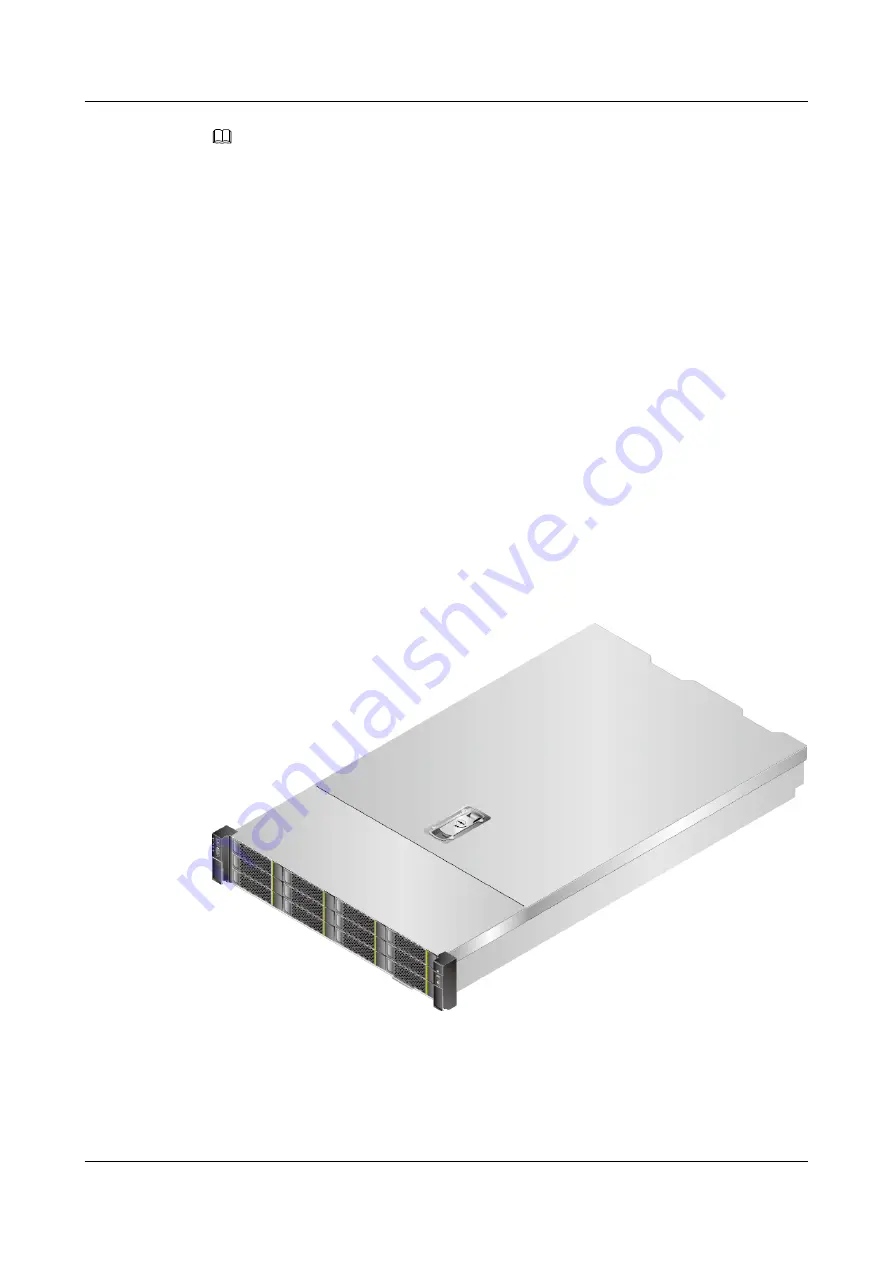
NOTE
2.5-inch or 3.5-inch indicates the size of a disk bay. A 2.5-inch disk bay can house a 2.5-inch disk, and a
3.5-inch disk bay can house a 2.5-inch or 3.5-inch disk.
l
[1]
: Common disks include SAS or SATA HDDs with 2.5-inch or 3.5-inch disk bays and SAS or
SATA SSDs with 2.5-inch disk bays.
l
[2]
: The front disk bays of
8-disk configuration 1
,
24-disk configuration
, and
25-disk
configuration
can only be 2.5-inch.
l
[3]
: When NVMe PCIe SDDs are configured, related hardware, such as disk backplanes and riser
cards must be configured.
l
[4]
: Number of installed front disks = Number of installed front common disks + Number of installed
front NVMe PCIe SSDs.
The number of installed front disks on a server cannot be greater than the maximum number of front
disks. For example,
12-disk configuration 2
supports a maximum of 12 front disks. If four front
NVMe PCIe SSDs are installed, only a maximum of eight front common disks can be installed.
l
[5]
: For
24-disk configuration
, a RAID controller card needs to be configured for every eight disks.
l
[6]
: The server where disks are connected through the Intel chipset (PCH) supports SATA disks only,
an optional SoftRAID license, and SoftRAID 0, 1, and 5. The server with SoftRAID configuration
does not support installation of a virtualization OS. If you have any doubts about the disk
configuration, contact your local Huawei sales representatives.
l
[7]
: Disks can be managed by the RAID controller card or the PCH. You can select only one of the
two management modes.
shows an RH2288 V3 with 12 disks.
Figure 2-1
RH2288 V3 with 12 disks
RH2288 V3 Server
User Guide
2 Overview
Issue 32 (2019-03-28)
Copyright © Huawei Technologies Co., Ltd.
7






























